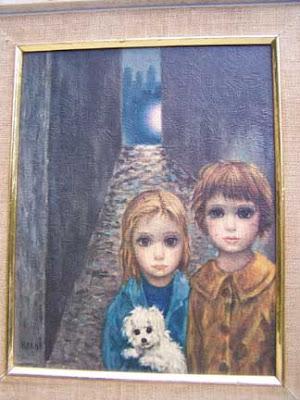
A Keane painting
Our generation may not be too familiar with the haunting “Keane Eyes” which were ubiquitous in the 1950s and 60s. Those dark, doe-eyed figures found their way into print and media, living rooms and coffee shops countrywide. But it wasn’t until Tim Burton brought light to the reality in his biographical drama Big Eyes that the truth about those paintings supposedly created by Walter Keane was made clear to young people.
Margaret Keane – Walter’s wife – spent years painting the “Big Eyed Waifs.” The artist’s husband convinced her that using his name would increase the paintings’ popularity. But as the fame of the paintings — as well as Walter himself — grew, so did Margaret’s anger and isolation. She finally reached a breaking point and came out publicly about the truth in 1970. After leaving Walter and suing him for slander, Margaret received four million dollars in damages and, finally, the recognition she deserved.
Though Margaret’s story has a relatively positive ending, the struggle of being or feeling forced to conceal her true identity is anything but happy — and certainly a reality countless other female artists have faced throughout history. It’s unlikely that Keane was the only talented women who was abased and abused in her own home, convinced that the world was not ready to appreciate feminine talent. Many other women have undoubtedly faced similar psychological abuse at the hands of their husbands or other men in their lives. They have been stripped of their confidence and self-dignity while others capitalized on their talent.
Considering how many renowned female artists chose to use fake identities prior to fame, we must ask: What is being done – and what can be done – to change the disempowerment women continually face? It’s not enough for female artists to refuse to adhere to a masculine creative environment. We must create a completely different environment. People must genuinely appreciate and value women’s work without making presumptions about quality based on a feminine name alone.
That’s all Maragret Keane wanted, after all — and what she was so glad to finally achieve. “I’m able to sign my name to the paintings,” said Keane in an interview. “That is really a blessing.”

